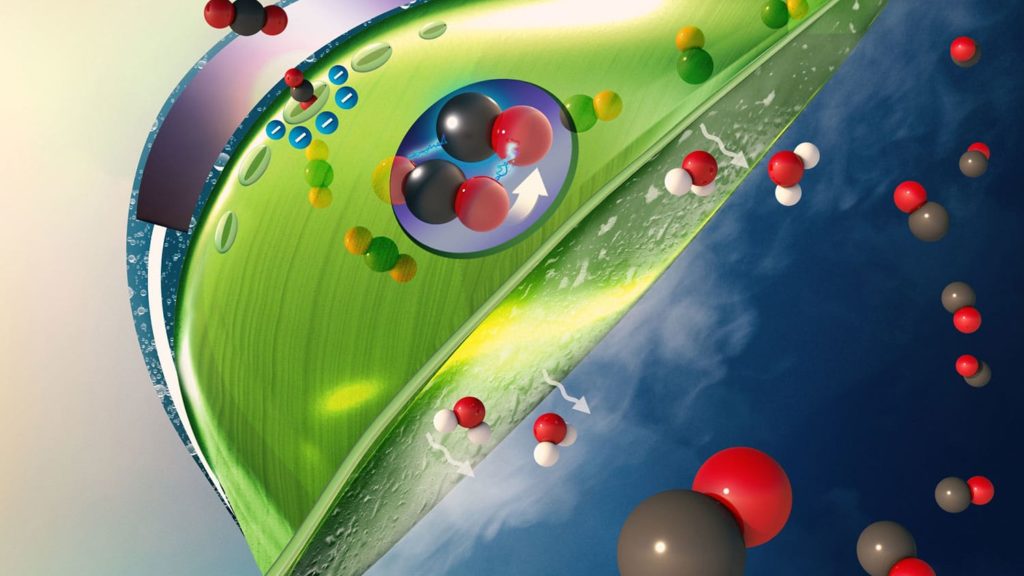This novel artificial leaf works in the real world, unlike other carbon capture systems that could only work with carbon dioxide from pressurized tanks.
The previous design proposed in 2019 consisted of a standard artificial photosynthesis unit that was encased in a transparent capsule made of a semi-permeable membrane of quaternary ammonium resin and filled with water.
Now, engineers have modified a standard artificial leaf system with inexpensive materials to include a water gradient – a dry side and a wet side – across an electrically charged membrane.
As bicarbonate builds, these negatively charged ions are pulled across the membrane toward a positively charged electrode in a water-based solution on the membrane’s wet side, where it is converted back into carbon dioxide to make fuels or in other applications.
When they tested the system, the researchers found that it had a very high flux – a rate of carbon capture compared with the surface area required for the reactions.
“It’s particularly exciting that this real-world application of an electrodialysis-driven artificial leaf had a high flux with a small, modular surface area,” Singh said.
